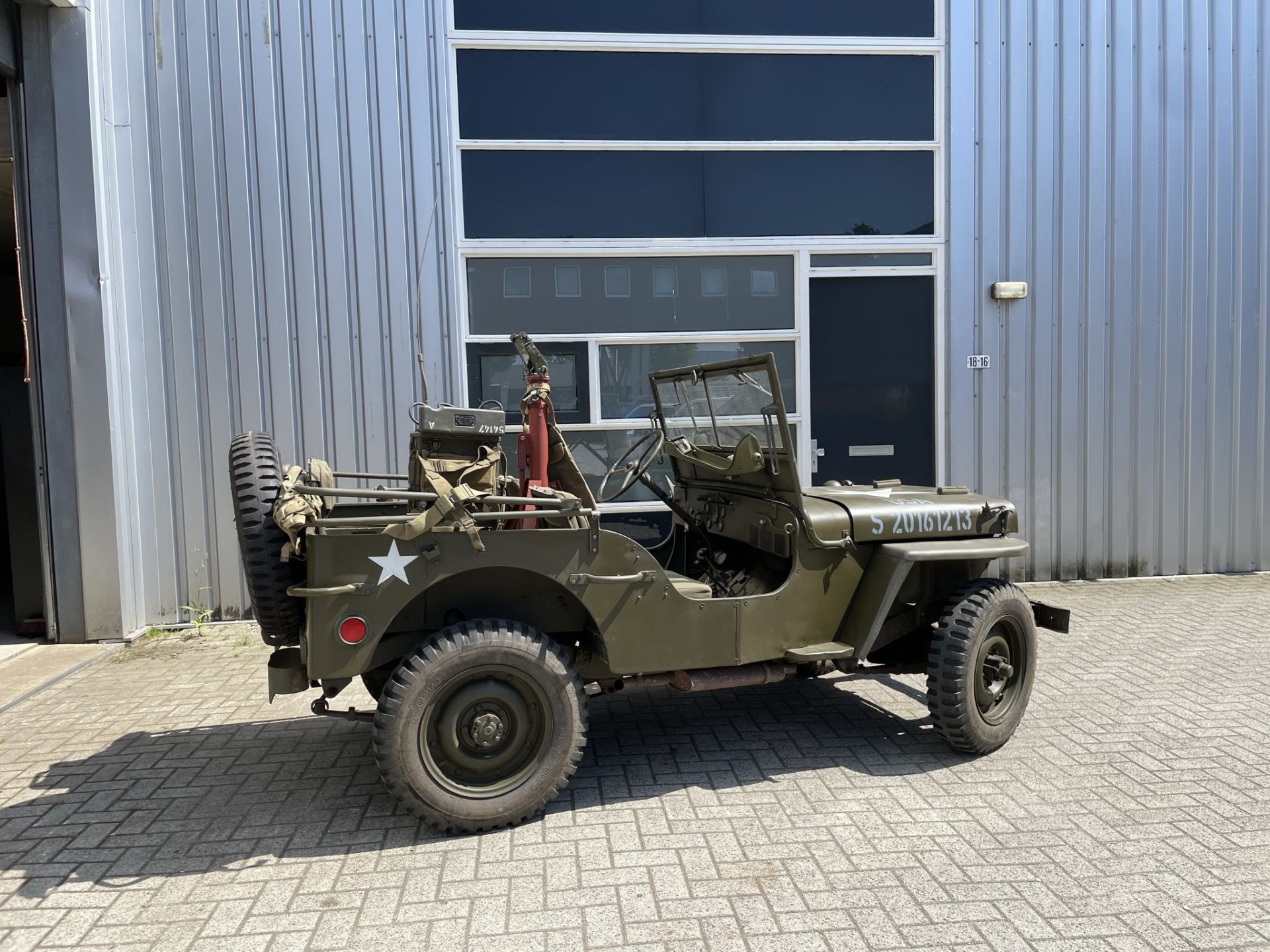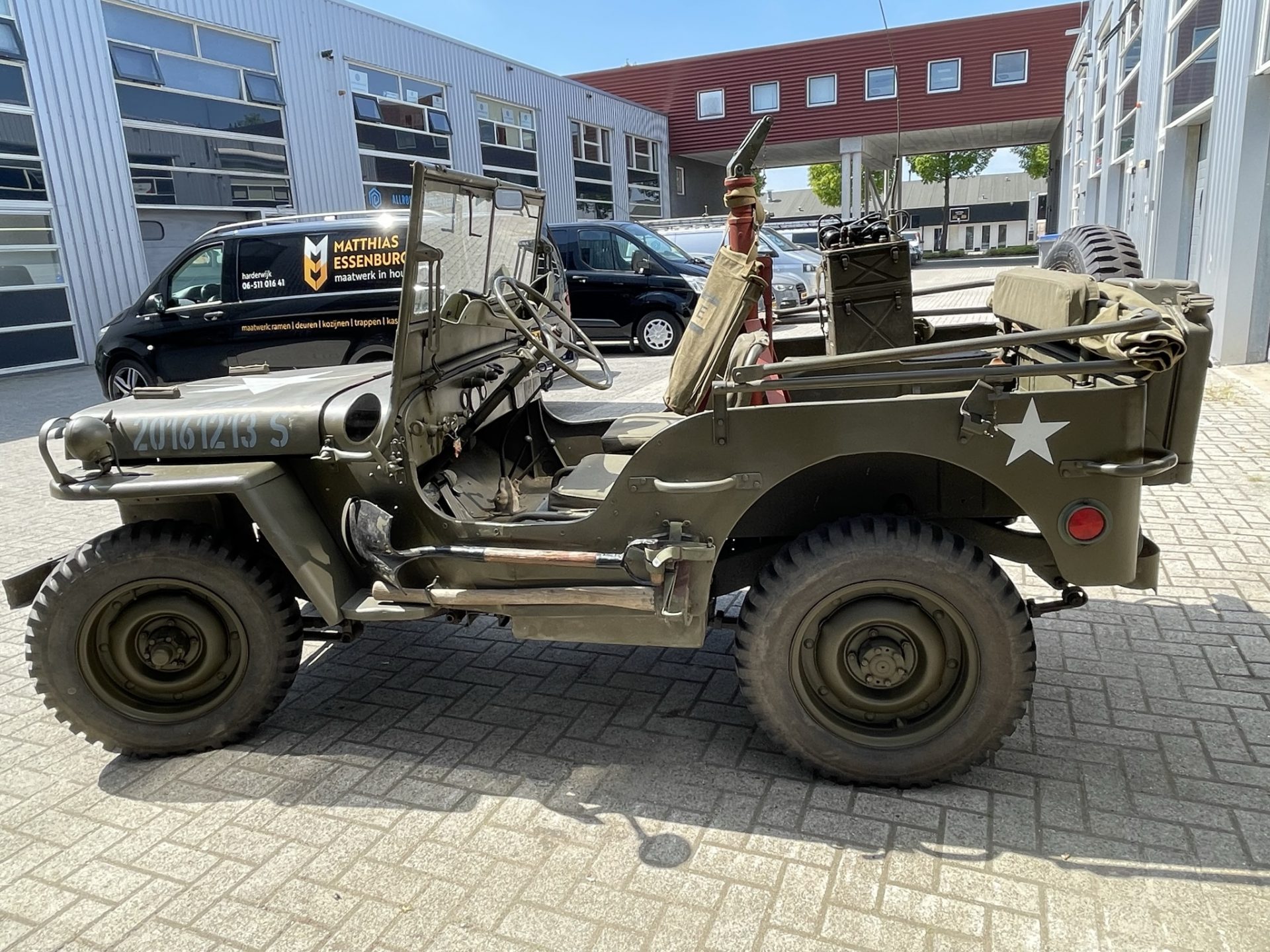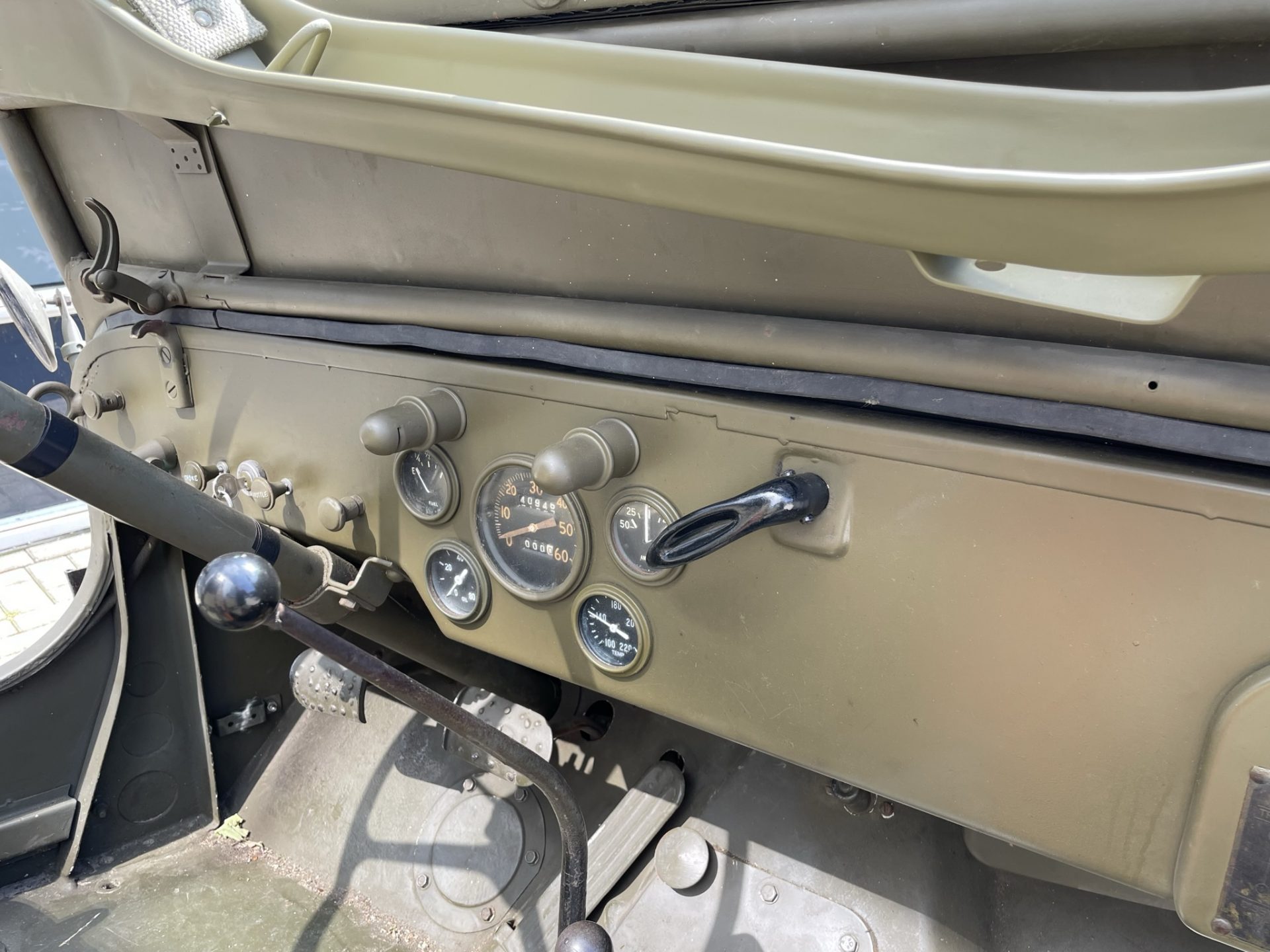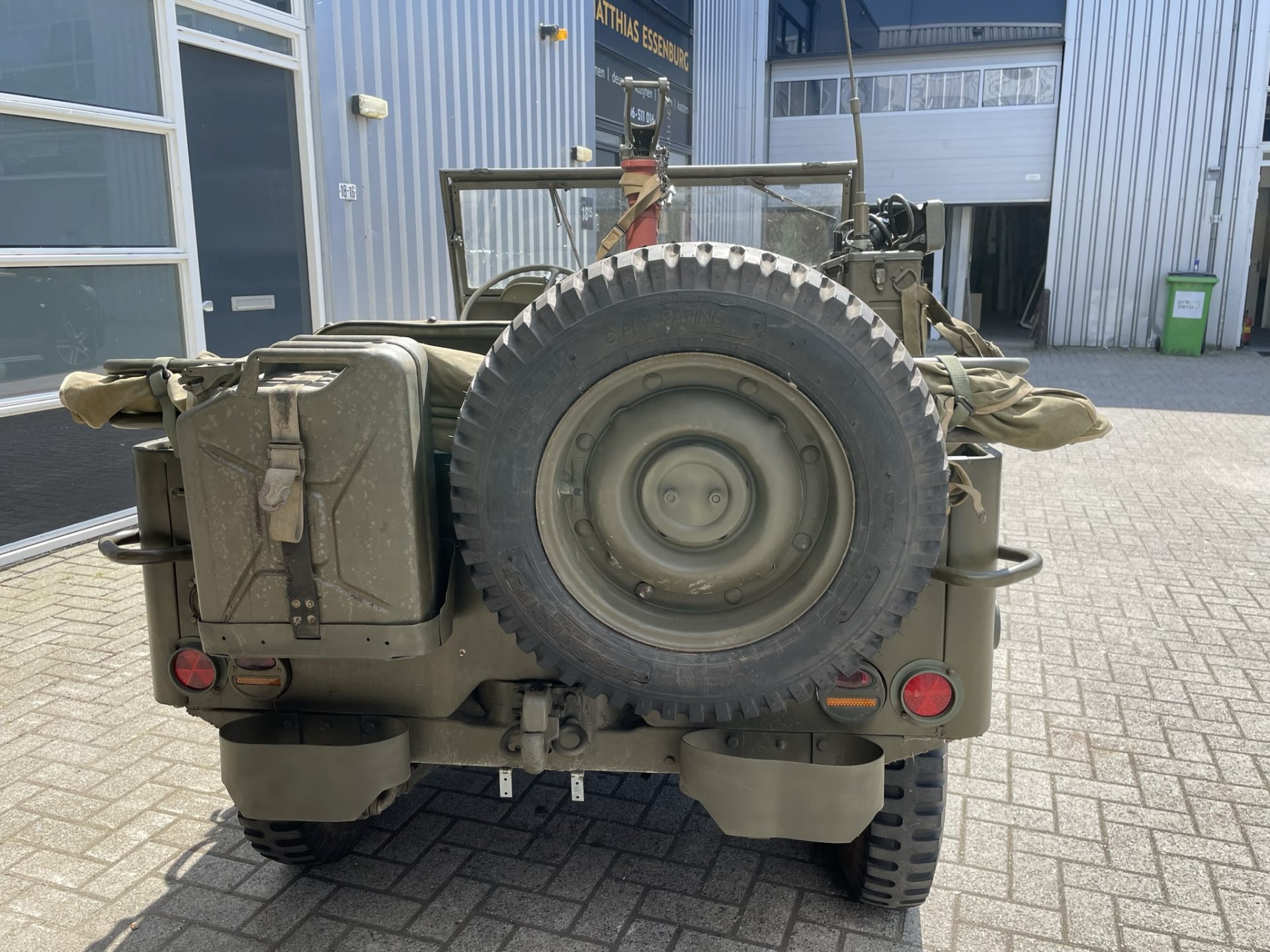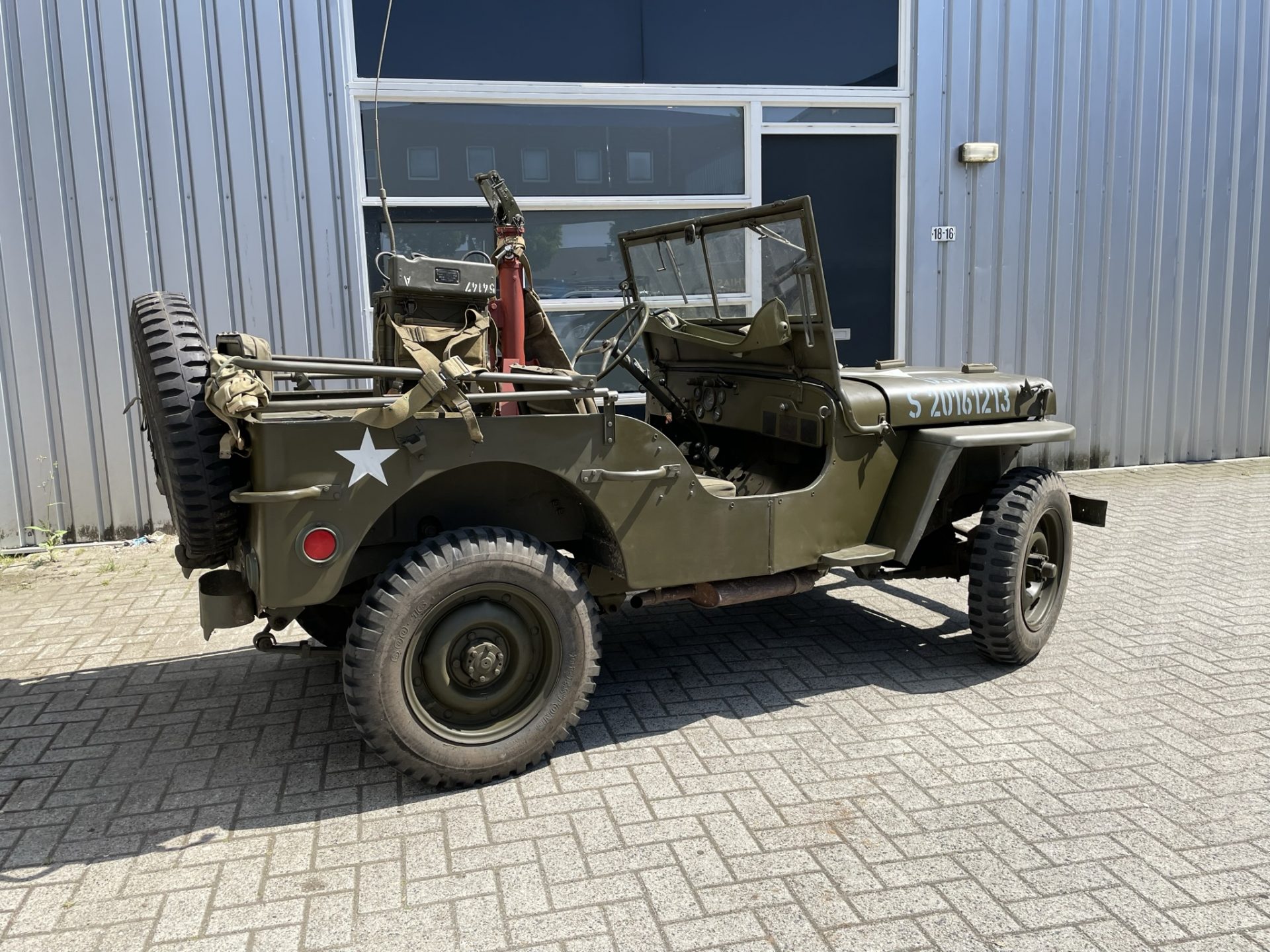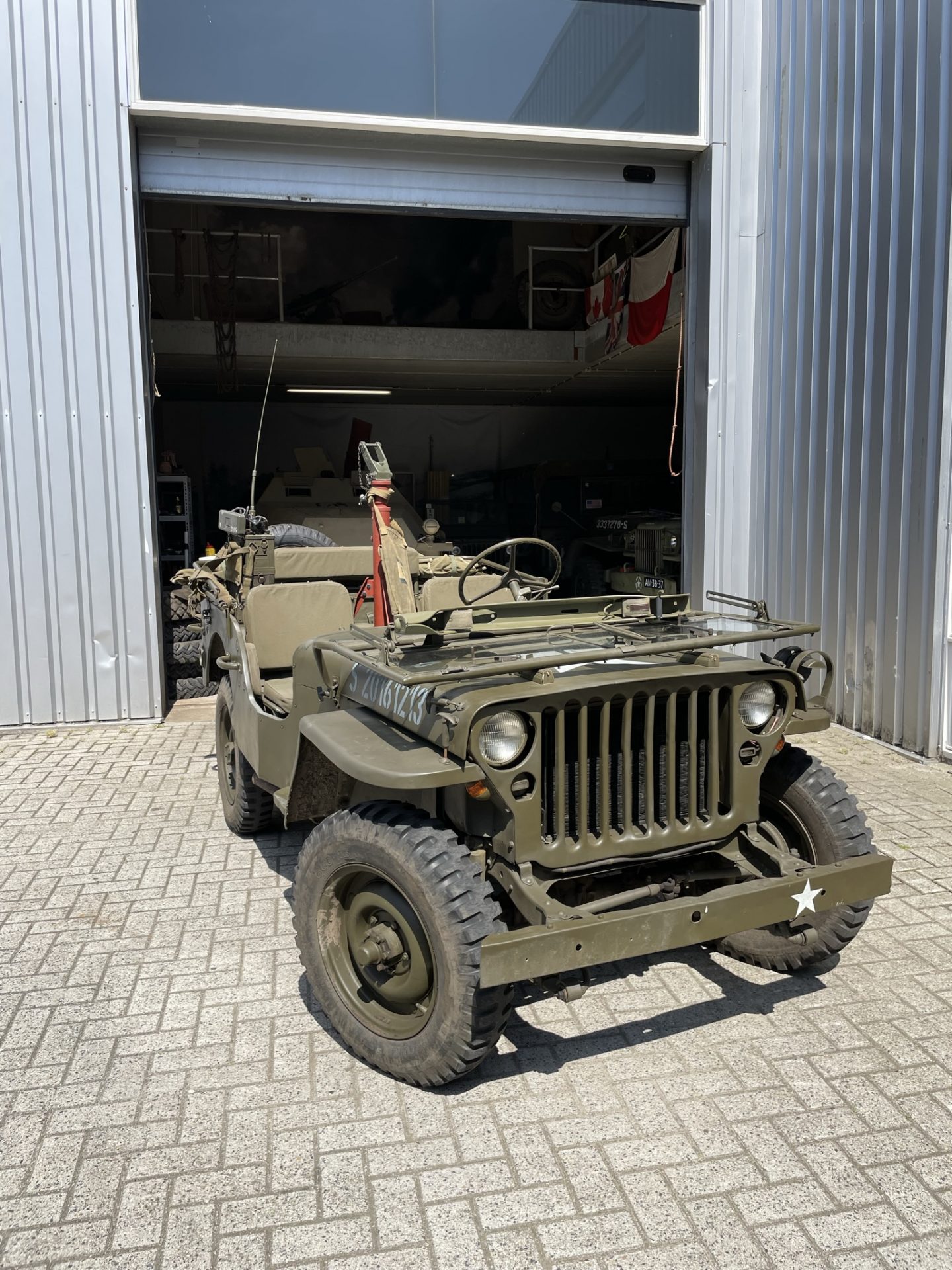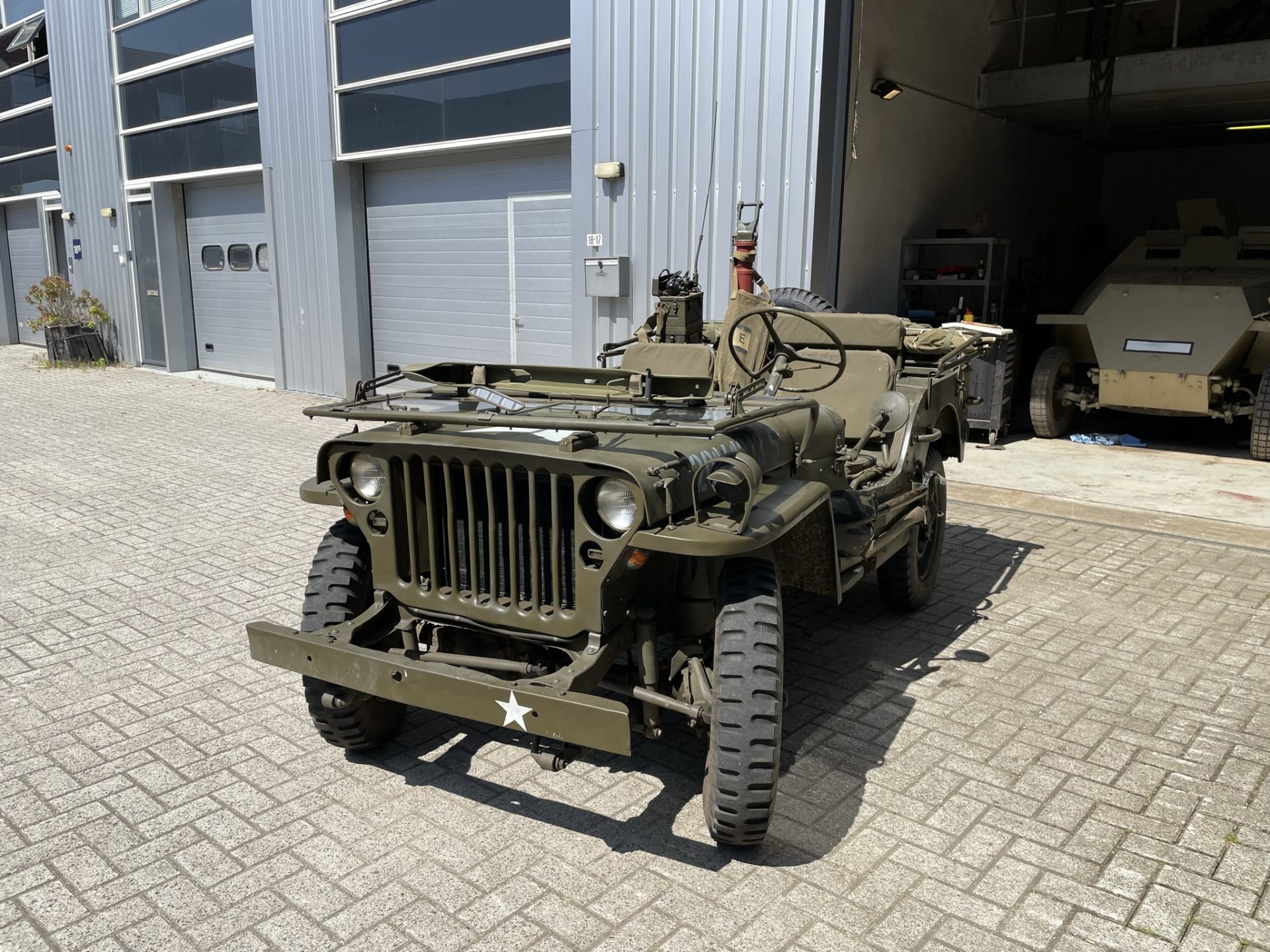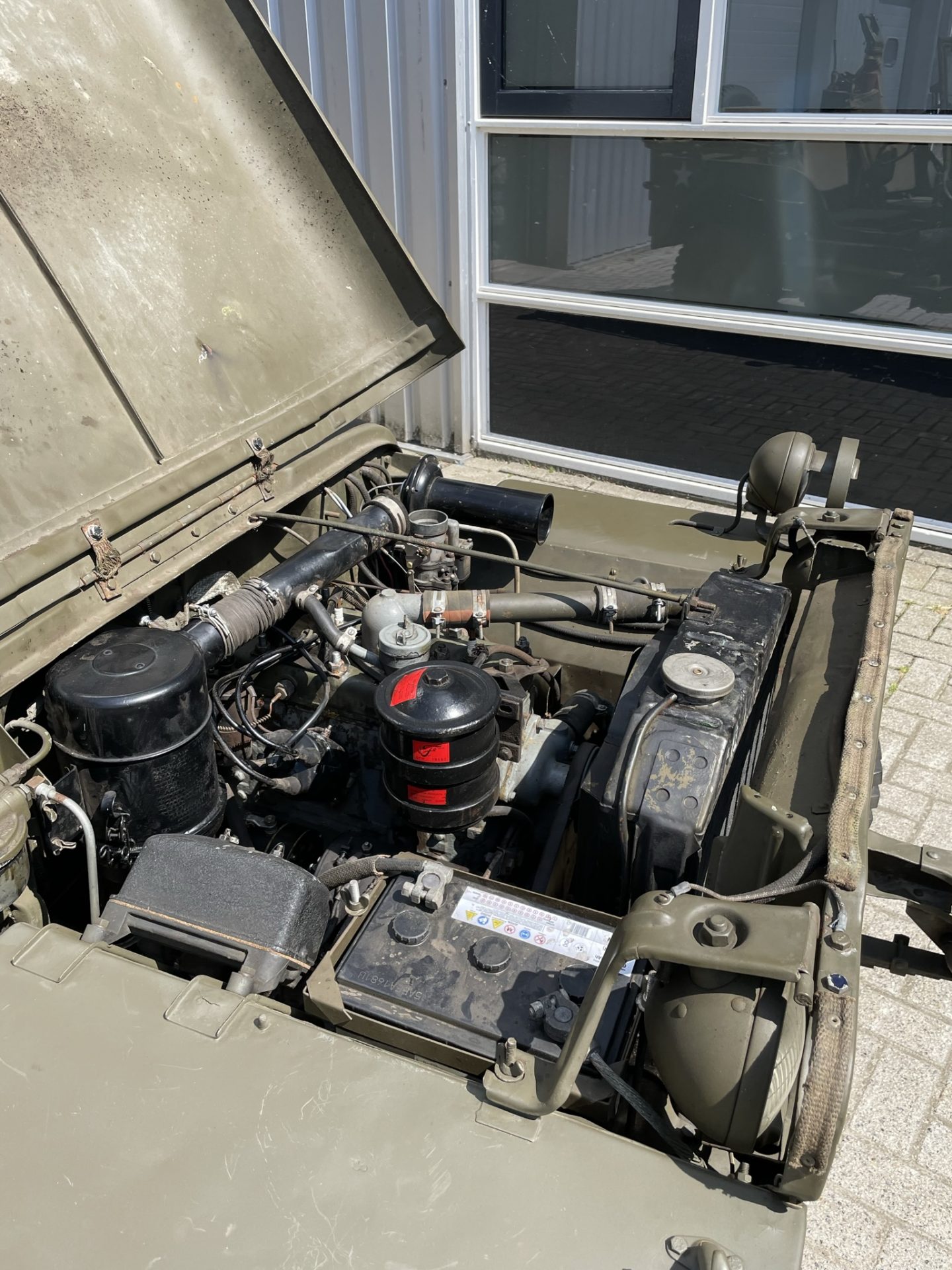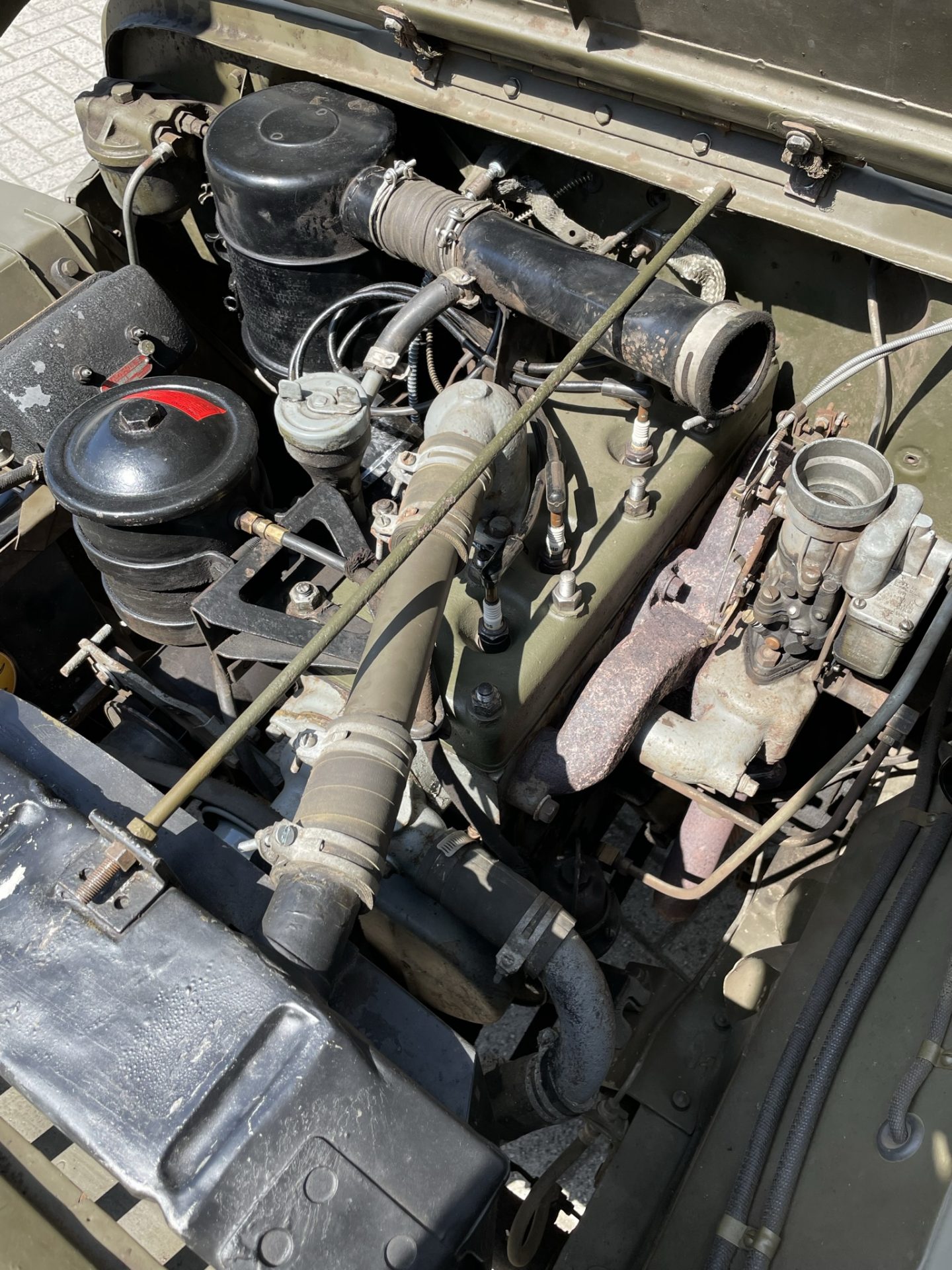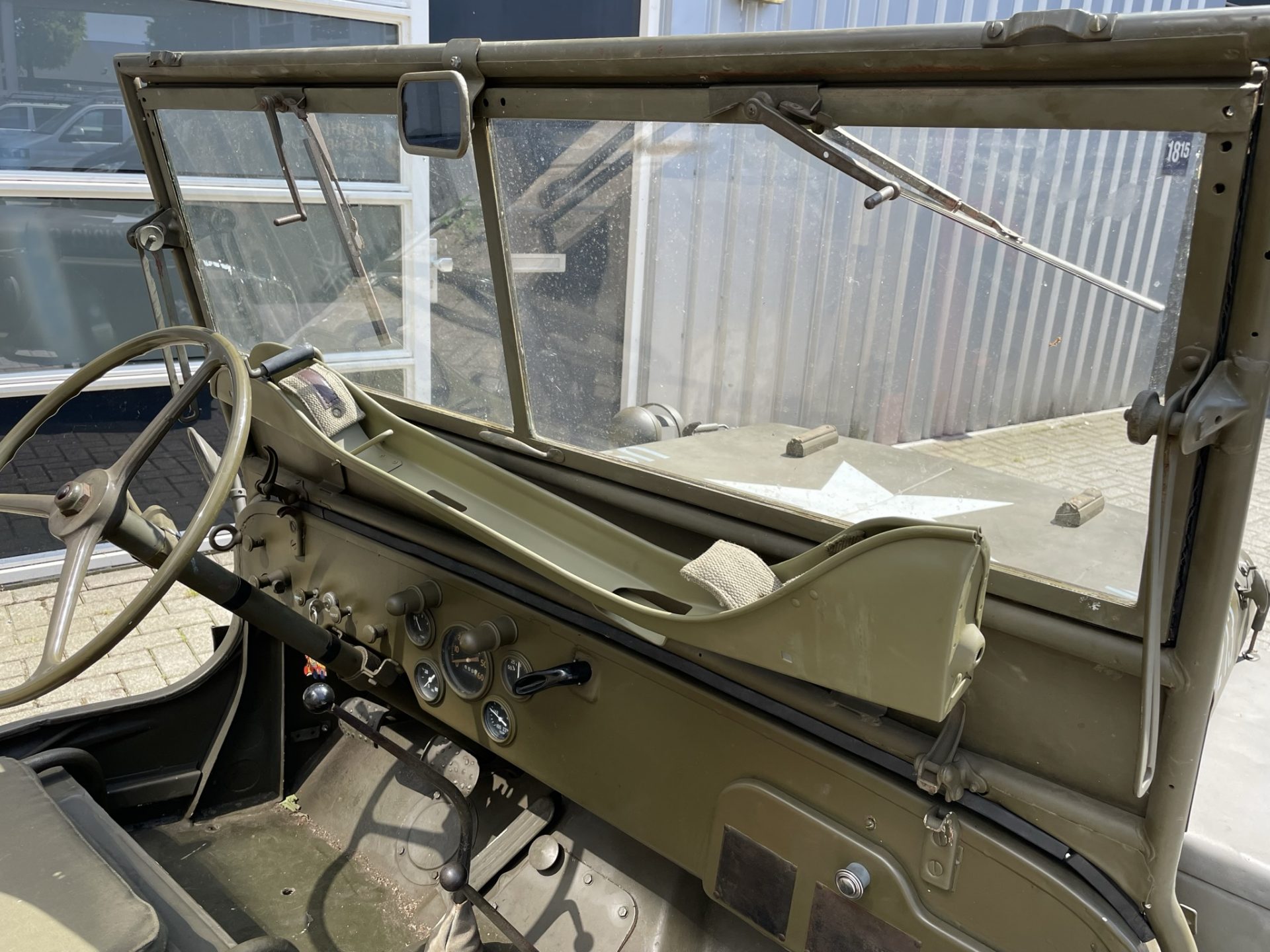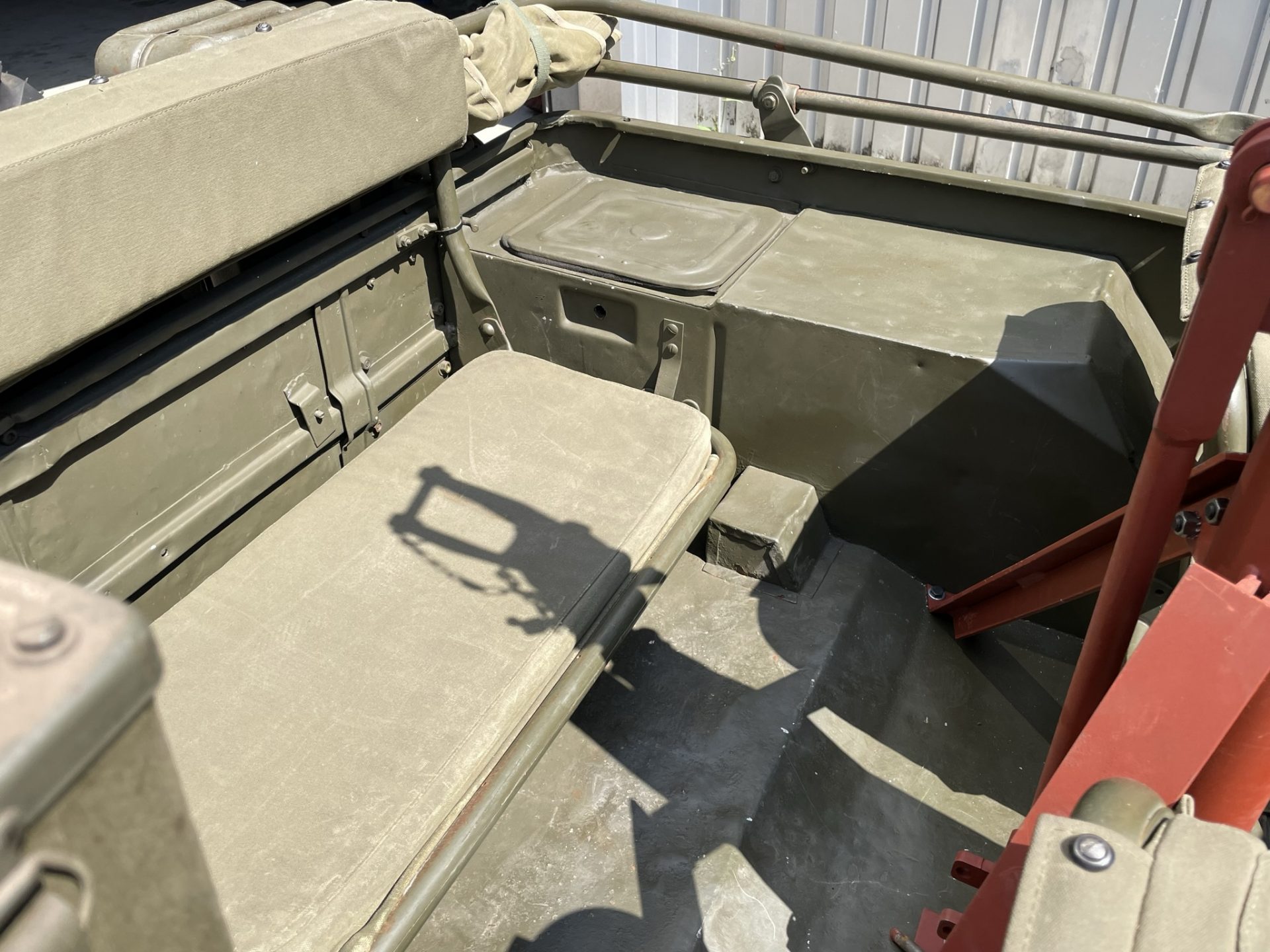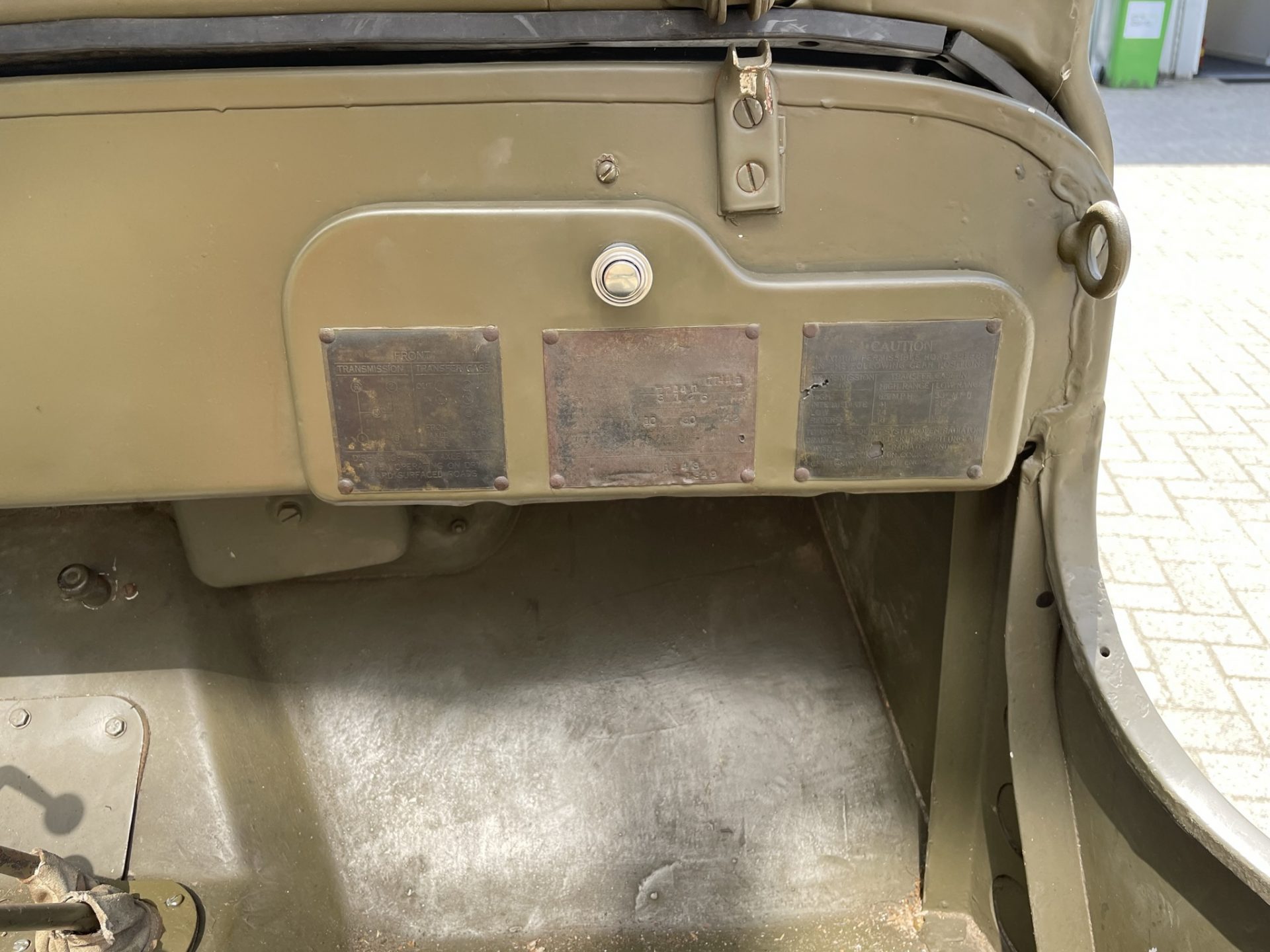Ford GPW made October the 30th 1942
Chassis number : GPW 774xx
Original Ford body,
Original Ford chassis
Original Ford gearbox
Original Ford transfercase
But, Willys jeep engine, recently restored.
Really good and original Ford gpw, no work needed, ready to go for the summer.
Including the canvas top.
More pictures , price and information : Info@byf41.com, or the contact form below.
Specs:
| Engine | 134 cu in (2.2 l) Inline 4 Willys L134 “Go Devil” 60 hp (45 kW; 61 PS) |
|---|---|
| Power/weight | 49 hp/ST (54.0 hp/t) |
| Payload capacity | 1,200 lb (540 kg) on-road; 800 lb (360 kg) cross-country |
| Transmission | 3 speed x 2 range transfer case |
| Suspension | Live axles on leaf springs front and rear |
| Ground clearance | 8+3⁄4 in (22 cm) |
| Fuel capacity | 15 US gal (12.5 imp gal; 56.8 L) |
Operational range | 300 mi (482.8 km) |
| Maximum speed | 65 mph (105 km/h) |
Number of Willys build:
| Willys MA | 1941 | 1,553 |
| Willys MB | 1941–1945 | 361,339 (335,531 + 25,808 “slats”) |
| Ford GPW | 1942–1945 | 277,896 |
World War II |
On the battlefield, the Jeep was fast, nimble and tough. It could handle nearly any terrain, and when it did get stuck, it was light enough for soldiers to lift free. It towed anti-tank weapons that could be deployed quickly, and it could mount a machine gun for fighting infantry.
The tough, simple, Jeep® Brand 4×4 became the GI’s best friend—second only to his rifle. One MB was even awarded a Purple Heart and sent home. General George C. Marshall, US Army Chief of Staff during World War II, and later U.S. Secretary of State, described the Jeep® Brand 4×4 as “America’s greatest contribution to modern warfare”.
Scripps Howard WWII Reorter Ernie Pyle once said, “It did everything. It went everywhere. Was a faithful as a dog, as strong as a mule, and as agile as a goat. It constantly carried twice what it was designed for and still kept going.” (Source Jeep.com)
Pictures Gallery:
More pictures :

